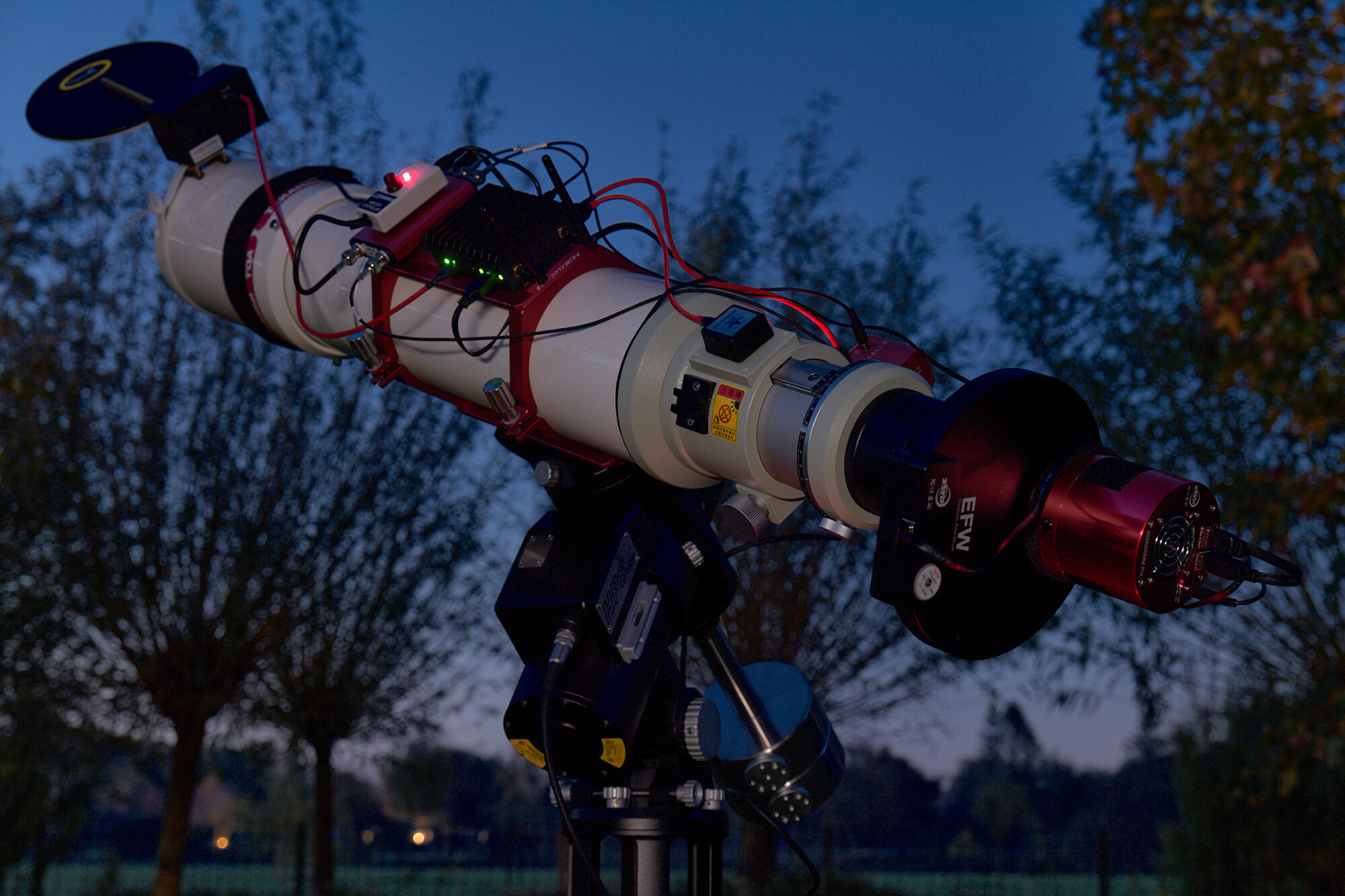
Observatory
One ‘Observatory’ stands for mobile setups in the backyard.
A second observatory is a remote observatory at IC Astronomy in Spain.
See here for details on gear, setup, software and workflow.
Telescopes
The main telescope currently in use is a PlaneWave CDK14. It is based at the remote observatory in Spain. The focal length is 2563mm and with a 35cm aperture it provides a focal ratio of f/7.2. This scope is great for galaxies, planetary nebulae, star clusters, etc.
The former main workhorse is the Takahashi FOA-130 NFB. This is a 130mm f/7.7 refractor. The 1000mm focal length provides an ideal field of view for medium-sized nebulae, as well as the mid-sized to bigger galaxies.
The wide-field scope in the line-up is the Takahashi FSQ106-EDX4. It’s focal length of 530mm and fast optics (f/5.0) allow for great narrow-band imaging of the larger nebulae and dust clouds. This telescope is designed for astrophotography.
Mounts
The two main mounts at the observatories are 10Micron mounts. One GM2000 HPS II Combi, located at the remote observatory in Spain, supports the Planewave CDK14 telescope. The other is the GM1000HPS, which is used in the backyard and supports the various Takahashi telescopes. 10Micron mounts are equipped with absolute encoders, which allow for unguided imaging up to 15-30 mins. Critical to this performance is building a good mount model each time the mount is setup. This can be largely automated using MountWizzard software. A good mount model easily corrects for small errors in polar alignment. The weight is about 20kg, and maximum load capacity is 25kg.
For more mobile use the Rainbow Astro RST-135E mount is used. This is a very small and lightweight (3.4 kg) mount. The harmonic drive motors can carry heavy unbalanced loads, up to 18 kg. Loads up to 13.5kg don’t even require a counterweight. It is typically used as a second rig, for traveling to a dark site, for lucky imaging applications for our solar system and as tracker for astrophotography with a regular mirrorless camera
Cameras
The observatory mainly uses dedicated CMOS-based astro-cameras. The largest cameras are the Moravian C3-61000Pro and the ZWO ASI6200MM Pro, both 16-bit full-frame cameras with high dynamic range and low read-noise. From QHY there is the QHY268c APS-C sized OSC camera for situations where OSC imaging is preferred. A fairly small, but very capable camera is the ZWO ASI533MM Pro, with square sensor an ideal camera for galaxies and clusters. The ZWO1600MM Pro has been a workhorse for several years, but functions now as a backup.
For each of the monochrome cameras, there is a full set of broadband and narrowband filters available, one from Astrodon and one from Chroma. This gives a lot of flexibility of choosing the right targets under various conditions.
Two small cameras for planetary work (ZWO ASI290MM and ZWO ASI224MC) complete the list of dedicated astro-cameras.
Software & Control
The observatory is designed to be remotely operated. And as part of an Apple-only environment, all software runs on Mac computers. The core is an INDI client-server infrastructure with KStars/Ekos as the main front-end. Planning and registration of sessions happens in Astroplanner, and SkySafari Pro is used as a versatile planetarium-platform. The latter is available on iOS as well. Mount management and mount model building works on MountWizzard 4. Image processing is mostly done in PixInsight.
Software for astrophotography can be complex and the hardware it works with changes rapidly. In selecting software, active development and an active user community are key criteria.


